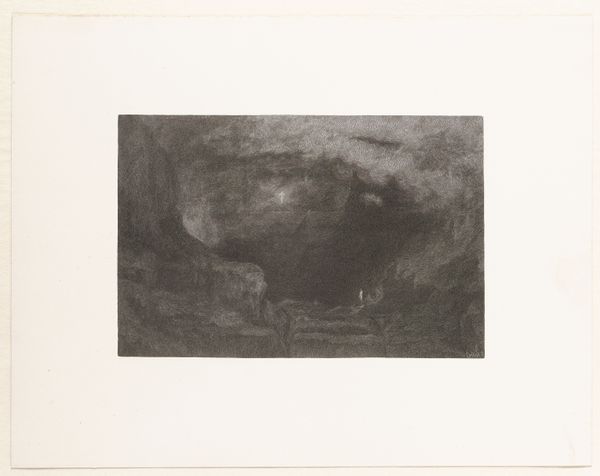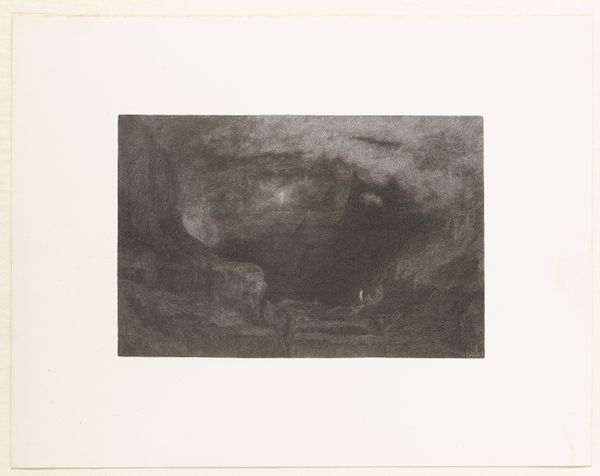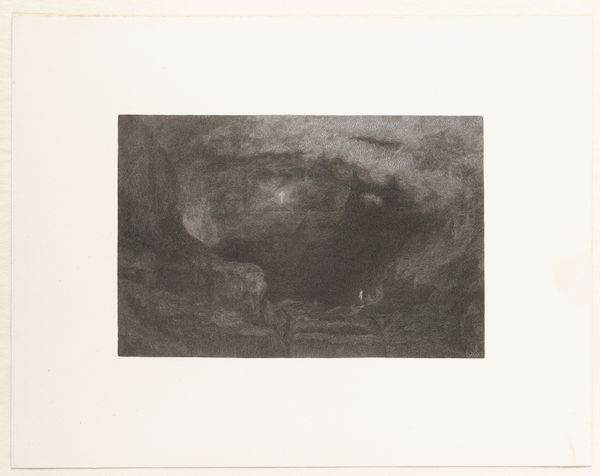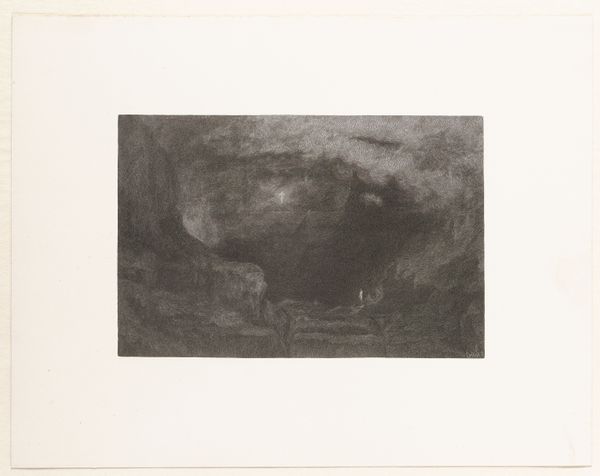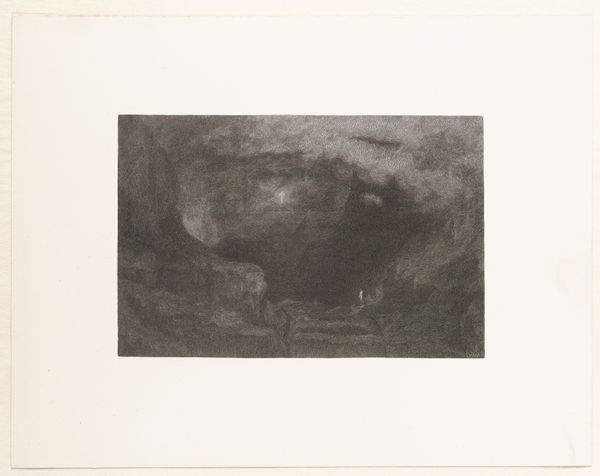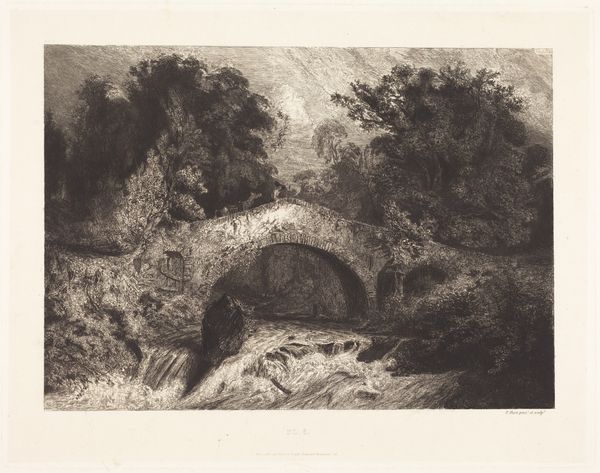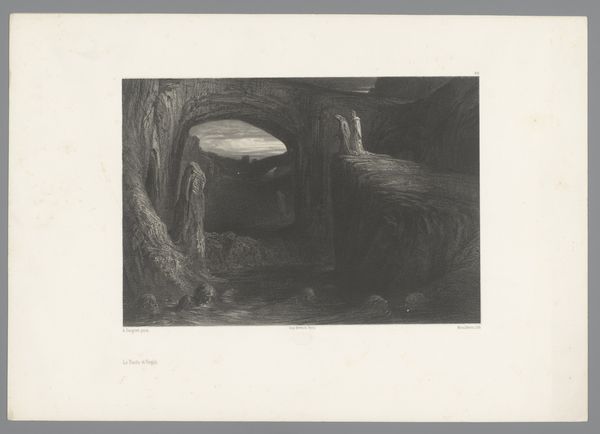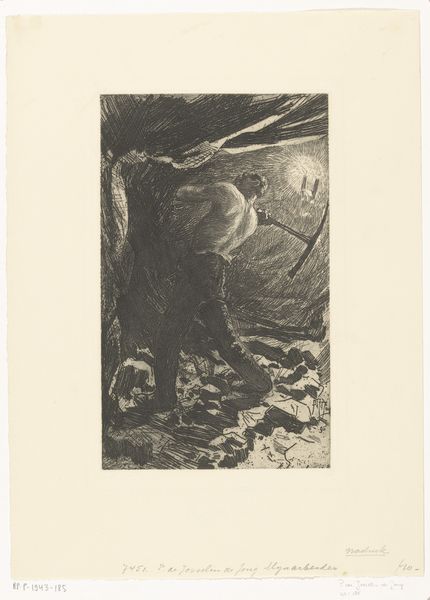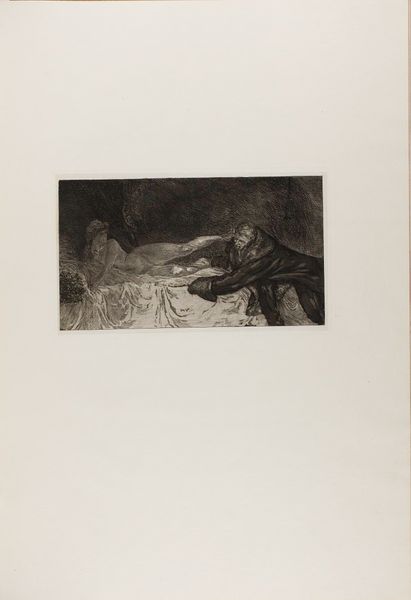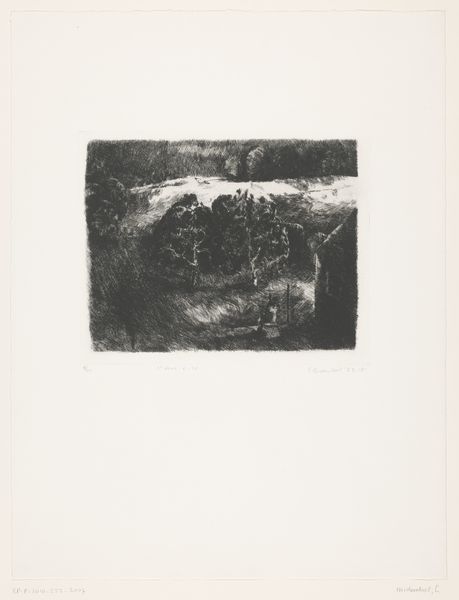
print, wood-engraving
#
pencil drawn
#
photo of handprinted image
#
shape in negative space
#
light pencil work
#
ink paper printed
# print
#
pencil sketch
#
pencil drawing
#
united-states
#
pencil work
#
tonal art
#
remaining negative space
#
wood-engraving
Dimensions: 5 x 7 5/8 in. (12.7 x 19.37 cm) (image)10 3/8 x 12 1/16 in. (26.35 x 30.64 cm) (sheet)
Copyright: Public Domain
Curator: What an intriguing image. I'm immediately drawn to its almost monochromatic quality and the interplay of light and shadow. Editor: Indeed, a very somber piece. What strikes me is the texture achieved. It's titled "Untitled" and attributed to William B. Closson, crafted around the 19th century using a combination of wood engraving and pencil. This kind of mixed media approach would have been relatively innovative then, influencing how printed imagery was received and consumed. Curator: Look at the tonality; there is such impressive depth achieved with seemingly simple materials. The contrast between the inky blacks and almost nonexistent whites create an immersive space. I think it’s amazing how the artist draws your eye to the center through the clever use of perspective. Editor: Agreed. Think about the physical labor and time invested in producing this. Each line, each shade meticulously carved, engraved and printed. There is also a history of American printmaking contained within, how imagery was circulated and understood via accessible and reproducible methods. The very act of making and disseminating such images had a democratizing effect. Curator: You're right, I almost missed it; look at the tiny figure! Such subtle addition can be read as a potent visual element, setting the work’s entire tone and adding mystery. I wonder who this lone figure could be and where it might lead. It injects such sublime solitude to it, don't you agree? Editor: It does invite pondering! I believe our appreciation for such pieces depends not only on deciphering forms and space, but understanding the wider socio-economic factors that governed its creation, reception, and continued relevance even today. This work exists as the output of human effort shaped by materials, market, and methods unique to its historical moment. Curator: A fair point indeed. But looking again, regardless of any of these socio-historical elements you raised, it's truly quite a visually arresting work. Editor: Absolutely, and its inherent physical construction—paper, ink, engraving, pencil, etc—speak to art's reliance on the material world for meaning.
Comments
No comments
Be the first to comment and join the conversation on the ultimate creative platform.
